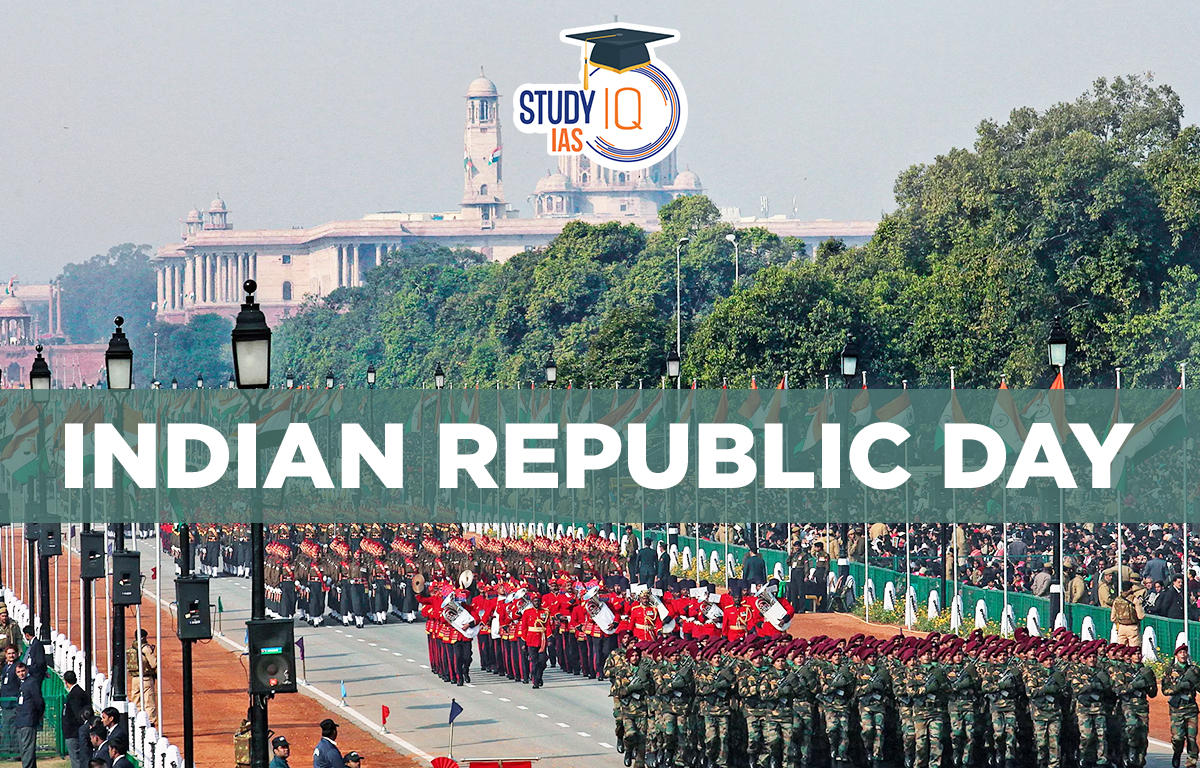Table of Contents
Context: Every year Republic Day is celebrated in India on 26th January.
About Republic Day
- It commemorates the adoption of the Constitution of India on January 26, 1950.
- While India gained independence from the British Raj in 1947, it wasn’t until January 26, 1950, that the Constitution of India came into effect, and the country became a sovereign state, declaring it a republic.
- Significance of Republic Day: It commemorates the spirit of independent India.
- It commemorates Indian citizens’ power to choose their government democratically.
- It signifies the right spirit of Independent and individual India.

Importance of 26th January: Background of Self-rule
- Non Cooperation Movement ended unceremoniously in February 1922 after the Chauri Chaura incident.
- Simon Commission: In 1927, British Authorities appointed the Simon Commission – a seven-man, all European team under Sir John Simon – to deliberate on political reforms in India.
- For the first time since 1922, protests against the Simon Commission spread nationwide.
- Nehru Report: Indian National Congress (INC) appointed its own commission under Motilal Nehru.
- It demanded that India be granted dominion status within the Empire.
- Irwin Declaration: In 1929, Viceroy Irwin had vaguely announced that India would be granted dominion status in the future.
- The Lahore Session of the INC of December 1929:
- On December 19, the historic “Poorna Swaraj” resolution was passed in the session.
- This declaration of Independence was officially promulgated on January 26, 1930.
- Thus, on 26th January1930, Indian National Congress (INC) proclaimed Poorna Swaraj from colonial rule.
- Significance of 26th January, 1930: The Congress urged Indians to come out and celebrate “independence” on that day.
- The Indian tricolour was hoisted across the country by Congress party workers and patriotic songs were sung as the country reconfigured its strategy for Independence.
- From 1930 till India finally won its independence in 1947, January 26 was celebrated as “Independence Day” or “Poorna Swaraj Day” with Indians reaffirming their commitment towards sovereignty on that day.
- Poorna Swaraj declaration was a critical pivot point for India’s freedom struggle. It is with this declaration that India’s national movement “shifted from the language of charity to the language of justice.”
- January 26 remains a solemn reminder of the journey India took to attain self-rule.
About Dominion Status
- Balfour Declaration of 1926, defined dominions as “autonomous communities within the British Empire, equal in status, in no way subordinate one to another in any aspect of their domestic or external affairs, though united by a common allegiance to the Crown and freely associated as members of the British Commonwealth of Nations.”
- In 1926, countries like Canada, Australia and New Zealand were granted dominion status.
Important Facts
- The Constituent Assembly held its first session on December 9, 1946, and the last on November 26, 1949, and then the Constitution was adopted a year later.
- Dr BR Ambedkar headed the Drafting Committee of the Constitution.
- The national anthem of India, Jana Gana Mana was first written in the Bengali language by the Rabindranath Tagore.
- The first President of India, Dr Rajendra Prasad first took an oath at the Durbar Hall of the government house on January 26, 1950.


 Erez Crossing
Erez Crossing
 Natural and Artificial Sweeteners
Natural and Artificial Sweeteners
 Flags of Convenience and Shadow Fleets
Flags of Convenience and Shadow Fleets



















